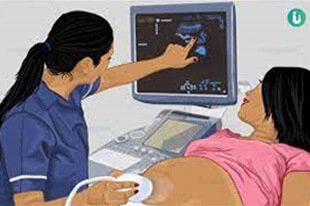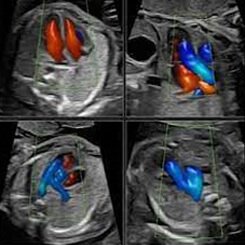Ways of diagnosing Congenital Heart Defects
June 23, 2022 | Contributed by Heer Patel
A Congenital Heart Defect (CHD) is a birth defect that affects the normal function of the heart. There is no established cause for this, however, there are several risk factors that can be grouped into maternal, environmental, etc. they can be diagnosed during the pregnancy or even after the birth of the child. With advances in medical technology, it has become possible to detect most of these heart defects and get timely treatment. In India, families who need donation for children for their CHD treatment can take support from various government support schemes and child heart Foundation.
Diagnosis of CHD during pregnancy

It can be suspected initially during an ultrasound scan of the baby in the womb. Another special ultrasound called fetal echocardiography is carried out in the second trimester. An echocardiogram uses ultrasound waves to create images of the heart in motion, showing how the blood goes through the heart and its valves. This helps to confirm the diagnosis.
Diagnosis of CHD after birth
It is also possible to diagnose a baby with CHD after birth. It could be based on the signs and symptoms that appear shortly after birth. The heart is examined as a part of routine physical examination even with the help of a stethoscope. The physician can listen to sounds that can be irregular, clicks, or even murmurs. However, some murmurs may be caused by blood flow changes to and from the heart and are considered important in diagnosis.

- Doing a chest X-ray also helps to visualize the heart, whether it’s bigger than it should be, or even to see the position of the heart with respect to the lungs.
- Pulse oximetry measures the amount of oxygen in the blood. If low oxygen is detected it could be indicative of a heart or lung problem.
- An electrocardiogram measures the heart’s electrical activity; the ECG machine displays the electrical signals of the heart. They help to detect irregular heart rhythms.
- Cardiac catheterization is a procedure wherein a catheter is inserted in the blood vessel and is visualized through an x-ray or MRI. A colored dye is injected into the catheter. It provides information on how blood flows and is pumped throughout the heart.
It can also be used sometimes in treatment procedures.
- An MRI also provides a detailed 3D structure of the heart. It allows for the accurate measurement of the heart chambers.
A combination of one or more diagnostic tests is required sometimes for the diagnosis. As the child gets older, physical symptoms of dyspnea, palpitations, dizziness and even fainting help to diagnose CHD.
However, the cost of these diagnostic procedures proves to be a socioeconomic problem in several lower socioeconomic background families. The absence of screening during pregnancy also poses a difficult scenario here. Lack of education, funds, and poor access to health care has made it difficult for the unprivileged sections of society from getting proper screening, diagnosis, and treatment.
Several NGOs especially the child heart Foundation in many states help raise donations for children and overcome these barriers. Several government schemes and NGOs have launched programs that help these sections of the society whose children suffer from CHD. A donation made to help a child in need goes a long way in transforming their life for the good. So donate on www.genesis-foundation.net/donate and help #SaveLittleHearts.
References:
https://nyulangone.org/conditions/congenital-heart-defects-in-children/diagnosis
https://www.nhs.uk/conditions/congenital-heart-disease/diagnosis/

